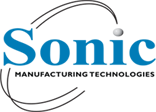
New Product Introduction & Design for Manufacturing
The process of engineering a new product at an incubator, lab, or startup is an exciting time. Perhaps your ultimate objective is to increase revenue, improve quality, or introduce innovation. No matter what, design engineering is critical, but successfully taking a new product to market is an equally complex process.
Moving from proof of concept (PoC) to full-scale production demands a high level of quality from beginning to end. That’s why mastering the new product introduction lifecycle starting with design for manufacturing (DFM) is essential to improve the odds for success.
We’ll go over the process for new product introduction below as well as how DFM at Sonic can help your project succeed.
New Product Introduction
Prototyping is always a challenge. For a new product to justify your efforts, however, it demands the ability to manufacture thousands of it at a time. Plus, all these must meet the specification requirements right out of the box.
Sonic has the capabilities to complete all six steps below in the new product introduction process thanks to our state-of-the-art, 85K-square-foot production facility in Fremont, California. This includes meeting industry standards for both low and high-volume manufacturing.
1. DFM
The Sonic manufacturing team evaluates your product’s design to determine the optimal processes to build and test it. This phase is critical as any necessary changes identified later will be more difficult and costlier to implement.
2. Parts Availability
An availability analysis determines how easily parts can be obtained as well as their cost. At this point, any potential issues identified in the supply chain can be addressed.
3. Engineering Verification
An initial build out is produced. This probably isn’t what the final product will look like, and it may not even be in a housing. Instead, the primary goal is design testing, especially of printed circuit boards (PCBs).
4. Testing
Once the initial PCBs are validated, additional testing systems are employed. These will move beyond design testing into areas including durability, safety, and reliability.
5. Design Verification
The next build will be much closer to how the finished product will look. To save money at this stage, however, 3D printing may be employed to fine-tune the final design before more expensive materials and complex manufacturing processes are used.
6. Product Validation
The final build is a dry run for the full-fledged manufacturing process. This includes not just the product, but packaging for both shipping and unit sales. Once your product and its manufacturing process are validated, you’re ready to begin full-scale production.
DFM at Sonic
Each step in the new product introduction process is important but beginning with expert DFM is critical to be successful. That’s why DFM at Sonic is your best choice.
DFM at Sonic provides you with key advantages:
- Prototype deliveries ranging from two days to two weeks depending on complexity and product needs
- More than 30 engineers on staff to provide development and support services
- Extensive experience working in multiple industries including aerospace, automotive, biomedical, computing, and defense
Plus, when you choose DFM at Sonic, you’re working with an agile team which can procure any necessary parts quickly and is flexible enough to meet your schedule as it changes.
The Sonic Advantage
At Sonic, we understand the pressures incubators, labs, and startups face: compressed development times coupled with the need to bring products to market as soon as possible. When there’s no room for error, that’s when you can count on Sonic.
Sonic Manufacturing serves clients from Silicon Valley to Salt Lake City to Sacramento. Request a quote today by calling, emailing, or using our Request a Quote form.
CALL FOR A QUOTE
(510) 580-8500
OR EMAIL:
Sales@Sonicmfg.com
